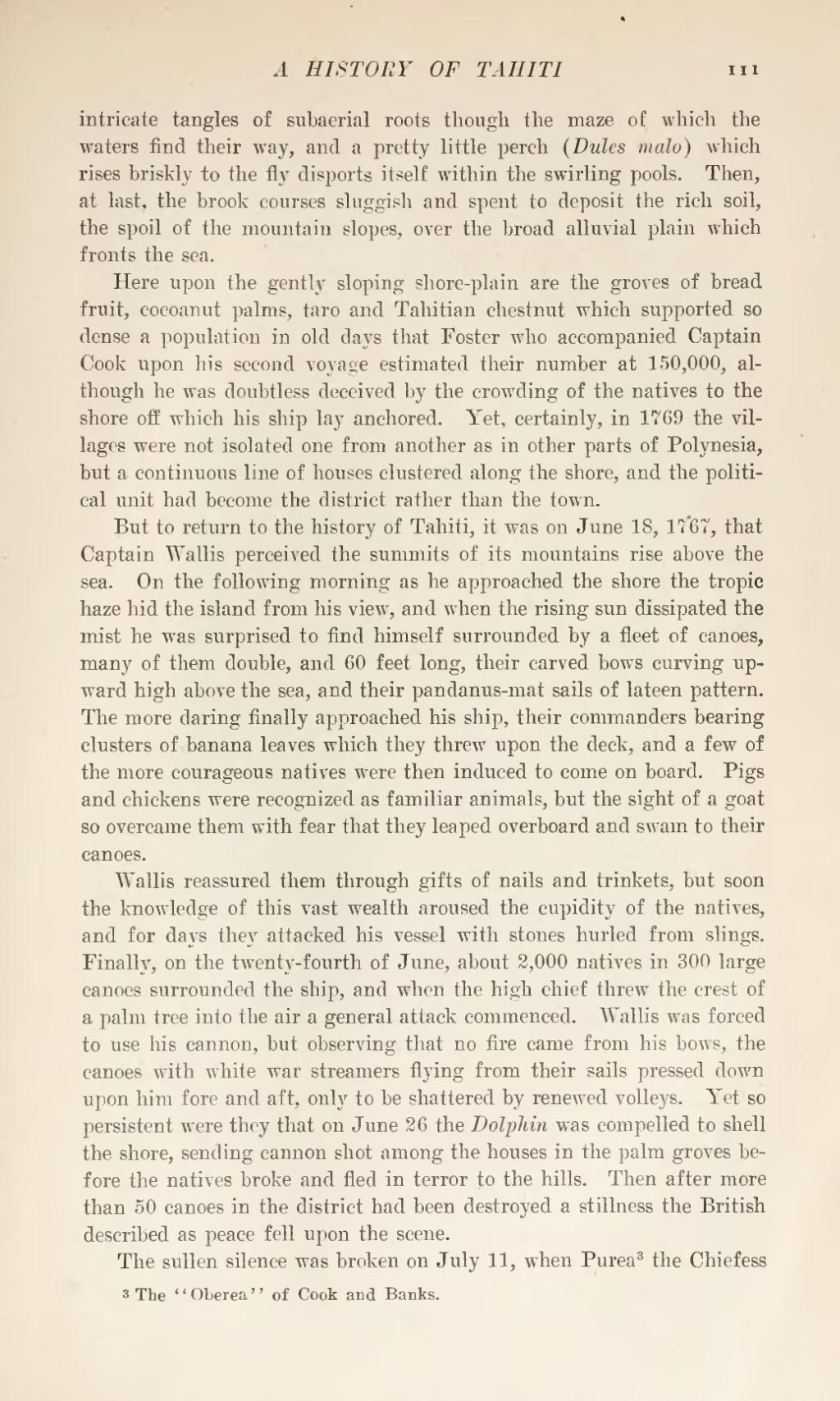intricate tangles of subaerial roots though the maze of which the waters find their way, and a pretty little perch (Dules malo) which rises briskly to the fly disports itself within the swirling pools. Then, at last, the brook courses sluggish and spent to deposit the rich soil, the spoil of the mountain slopes, over the broad alluvial plain which fronts the sea.
Here upon the gently sloping shore-plain are the groves of bread fruit, cocoanut palms, taro and Tahitian chestnut which supported so dense a population in old days that Foster who accompanied Captain Cook upon his second voyage estimated their number at 150,000, although he was doubtless deceived by the crowding of the natives to the shore off which his ship lay anchored. Yet, certainly, in 1769 the villages were not isolated one from another as in other parts of Polynesia, but a continuous line of houses clustered along the shore, and the political unit had become the district rather than the town.
But to return to the history of Tahiti, it was on June 18, 1767, that Captain Wallis perceived the summits of its mountains rise above the sea. On the following morning as he approached the shore the tropic haze hid the island from his view, and when the rising sun dissipated the mist he was surprised to find himself surrounded by a fleet of canoes, many of them double, and 60 feet long, their carved bows curving upward high above the sea, and their pandanus-mat sails of lateen pattern. The more daring finally approached his ship, their commanders bearing clusters of banana leaves which they threw upon the deck, and a few of the more courageous natives were then induced to come on board. Pigs and chickens were recognized as familiar animals, but the sight of a goat so overcame them with fear that they leaped overboard and swam to their canoes.
Wallis reassured them through gifts of nails and trinkets, but soon the knowledge of this vast wealth aroused the cupidity of the natives, and for days they attacked his vessel with stones hurled from slings. Finally, on the twenty-fourth of June, about 2,000 natives in 300 large canoes surrounded the ship, and when the high chief threw the crest of a palm tree into the air a general attack commenced. Wallis was forced to use his cannon, but observing that no fire came from his bows, the canoes with white war streamers flying from their sails pressed down upon him fore and aft, only to be shattered by renewed volleys. Yet so persistent were they that on June 26 the Dolphin was compelled to shell the shore, sending cannon shot among the houses in the palm groves before the natives broke and fled in terror to the hills. Then after more than 50 canoes in the district had been destroyed a stillness the British described as peace fell upon the scene.
The sullen silence was broken on July 11, when Purea[1] the Chiefess
- ↑ The "Oberea" of Cook and Banks.
